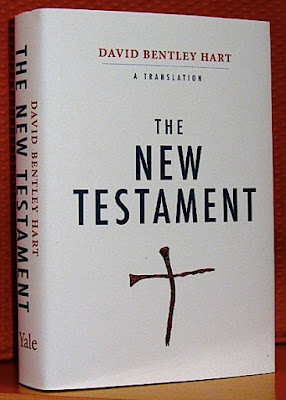As my readers know, i am fascinated by John 1:1 and how it is translated, as I feel the traditional rendering leaves much to be desired.
David Bentley Hart's New Testament 2017 reads at John 1:1 "In the origin there was the Logos, and the Logos was present with GOD, and the Logos was god." (Notice the word "god" in small letters in the last clause.)
However, I discovered in his earlier work, "Atheist Delusions: The Christian Revolution and Its Fashionable Enemies" he actually writes:
"As a general rule, the 'articular' form ho Theos—literally, 'the God'—was a title reserved for God Most High or God the Father, while only the 'inarticular' form theos was used to designate this secondary divinity. This distinction, in fact, was preserved in the prologue to John, whose first verse could justly be translated as: 'In the beginning was the Logos, and the Logos was with God, and the Logos was a god.'"
It's unfortunate that DBH felt he had to tone it down for his New Testament translation.
metatron3@gmail.com
Visit: Scholarly notes from David Bentley Hart's translation of the New Testament
Visit my favorite Bibles which I have listed on my board on Pinterest. https://www.pinterest.com/ncbartender/my-favorite-bible-versions/



See the DBH note on John 20:28 - On the other hand, he emphasises the high Christology of the Fourth Gospel when doubting Thomas salutes the risen Jesus as “My Lord and my God (“ho kurios mou kai ho theos mou”) – meaning not that Jesus is godlike but that he is, with the definite article, “ho theos”, God himself.
ReplyDelete@John Stamps that was merely an exclamation. If someone says to someone “oh my God!”, that doesn’t mean that person is calling the other God...
ReplyDelete@Alexander Hamilton so he's not calling him Lord either?
ReplyDelete